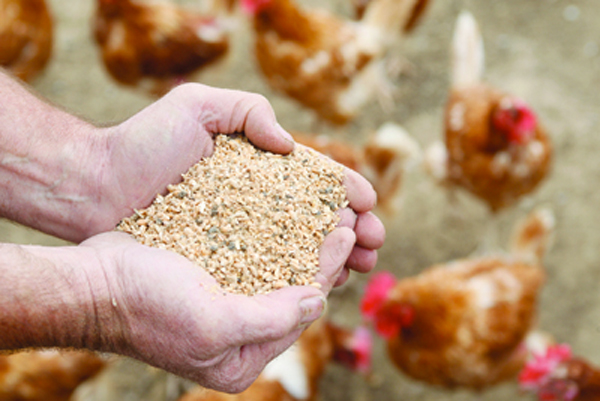
Adverse weather conditions in many parts of the World have caused prices for wheat and soya to rise rapidly in recent weeks, putting severe pressure on many livestock enterprises in the UK.
Feed costs are typically the largest single expenditure items for livestock producers, accounting for approximately a third of production costs for dairy and intensive beef producers and around 60 per cent of costs in the poultry sector.
A number of weather events around the world, particularly drought in parts of North America, are driving supply side concerns.
The delayed harvest in the UK is also putting pressure on domestic supplies. Over the last two months, feed wheat has increased by nearly £40 per tonne and soya meal up nearly 50 per cent since the start of the year.
"The wet weather we have experienced in recent months has certainly affected the quality of our forage crops with farmers having to use every break in the rain to try to conserve grass" said NFU Deputy President and dairy producer Stephen James.
"But, with harvest delayed and dry matter content often lower than hoped, many of us will have to rely on purchasing more feed than we would have budgeted for this winter to maintain production levels. With our principal input cost increasing significantly and our concerns over milk price well documented, we face mounting pressures as we head in to what could be a long and arduous winter."
Free range egg producer and NFU poultry chair Clare Morgan said since two thirds of production costs were feed, it is clear that the recent spikes were putting severe pressure on producers.
"Unfortunately, we are aware of reports of downward pressure from retailers on egg prices at a time when our costs are soaring."
The pig industry is also struggling with producers urging consumers to buy British pork. The National Pig Association warned that up to 10% of producers could be at risk of leaving the industry.
Again, the largest concern is the cost of feed which has soared up 25% largely because of the harsh weather conditions in the US.
In its monthly agricultural supply/demand update the U.S. Department of Agriculture on August 10 again lowered the outlook for U.S. corn production, reflecting the continued deterioration of this year's crop due to the once-in-a-lifetime drought that affects most of the U.S. corn belt.
The report comes on the back of the UN Food and Agriculture Organisation’s Food Price Index, which showed global food prices rose by 6 per cent in July and news of drought in other major cereal growing regions including parts of Russia and India.
As grain rallies pushed prices to record levels last month, FAO economist Abdolreza Abbassian warned that panic over the effects of droughts, exacerbated by commodity speculation, would affect access to food for the world’s poorest people.
According to HGCA, high prices are already having an impact on demand forecasts with US feed demand for maize now forecast at 103.51Mt, 12.07Mt below last season. Maize demand from US ethanol producers is forecast at 114.3Mt, 12.7Mt below last season.
José Graziano da Silva, director-general of the FAO made the call earlier today, advising that a competing demand for the decimated US maize crop would put unsustainable pressure on maize prices and drastically limit availability. He said, "Much of the reduced crop will be claimed by biofuel production in line with US federal mandates, leaving even less for food and feed markets."
In Wales alone, there are 25,800 pigs compared to 67,800 in 2000. The number of breeding pigs has also halved from 8,900 to 4,500, a figure that Christine Jones, NFU county chairman, expects to see snowball in the near future.
But "poultry require specialist diets and, with no cost-effective replacement for soya in monogastric diets, our costs are heavily determined by world commodity markets" Claire Morgan continued.
“It is important that short-term supplier prices to farmers reflect the recent volatility and fundamental change in world commodity feed markets. In the longer term, the whole supply chain needs to work together on delivering supply relationships which take into account inflation in production costs,”
